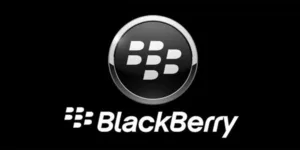Sometimes it seems like we are living in some alternative universe. For instance, this week, the most energy-rich State in the US, one where politicians had been actively making fun of California for their lack of preparedness for Climate change, was itself brought to its knees with a similar problem. What is somewhat interesting is that California was hit mainly because of the Federal Government’s outdated forest management policies. In contrast, Texas was hit because it deregulated, and its power infrastructure didn’t anticipate climate change either. What else is fascinating is California’s governor took responsibility even though he could have argued it wasn’t his fault. The Texas Governor, an old white guy, largely blamed a young black woman who had nothing to do with the problem (she was rightly not amused).
But with thousands without water, gas, or electricity during a massive cold snap, stores shut down or out of groceries, and children, older adults, and entire families at risk of severe injury or death, companies needed a tool to mitigate the damage. The best I know of to do this is BlackBerry’s AtHoc which provides a comprehensive method to check on and assure employee safety during a natural or human-made disaster.
Let’s talk about that this week.
Mitigating The Next Disaster
Companies have Disaster Preparedness plans. Individuals often do not. Yet, a company can’t operate if its employees are dead, sick, or injured. Individuals’ lack of preparedness is problematic when a disaster hits like it did in Texas, where the State was ill-prepared. For instance, a company operations manager should know that when you lose both heat and water, you need to turn off the water at the main, drain the pipes, and freeze and burst, keeping the site down even after water and power are restored.
Companies have plans to shelter employees, often have medical resources on site, and have vehicles that can be used to get employees to shelter and safety. But with people working remotely, most of these resources cannot be used and coordinated as effectively as they might have had those employees on site.
Employee communications and monitoring on-site, coupled with regular disaster drills, protect both the company and the employees, but those protections are primarily lost when they are remote. What is needed is a system that can operate during and after a disaster to coordinate both on-site and off-site employee movement, assure employee safety, and get both employees’ and employees’ help to help when needed.
Enter BlackBerry
BlackBerry, whose then communication system remained up during 9/11, saving countless lives, created a solution to assure similar capability after that old Blackberry network was taken down. That system is called AtHoc, and it is used heavily by governments to assure employee safety. It uses a secure cloud technology compliant with Government Security standards to assure communication between employees and management during a disaster. With AtHoc adequately deployed, you can assure the safety (as long as the battery backup in cell towers remains up) of your employees during a disaster to assure that these employees are safe. During a disaster, every second count, for instance, if companies in Texas had been able to rapidly contact employees and make them part of the firm’s disaster mitigation effort, they could have helped prevent things like CO2 poisoning and freezing.
They could have shared information about protecting their homes and families with predetermined recommendations based on this specific problem. While it is clear that many companies in Texas had not planned for this level of cold, many undoubtedly had other locations with disaster guidelines in place to handle such a problem that could have been shared and then implemented.
If the firm had modeled this type of problem, they would have had shelter options planned out, made available resources like spare generators to power those shelters as needed, and distributed things like water purification kits to limit the health problems connected to drinking contaminated water.
They would also have coordinated help between employees in good shape with technical skills to go to employees with inadequate skills and resources to prepare their homes for heat and water failures.
Since they didn’t do this, Texas’s recovery time will be extended as people have to rebuild or otherwise fix homes with massive amounts of water damage due to burst pipes.
Wrapping Up:
Keeping employees safe when they are on-premise is hard, but disaster preparedness plans, if done right, can make a huge difference. But, I’ll bet many of these plans haven’t been updated since the Pandemic, and keeping employees safe while they are remote is far more complicated. Tools like BlackBerry AtHoc, when coupled with a Disaster Preparedness plan, can be instrumental in lowering death and injury and assuring a faster path to recovery. Employees dealing with massive home damage or deaths in the family will be distracted for long periods and could come to resent the fact that their company likely knew what to do but didn’t share that knowledge timely.
Use the Texas disaster as a reminder to get your Disaster Preparedness plans up to date, to include remote employees, and include a contact solution like AtHoc. The life you save could be your own.








